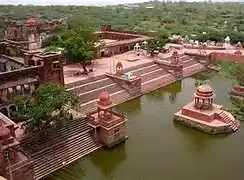Exploring Arwal: A Comprehensive Guide
Introduction
Welcome to our comprehensive guide to Arwal, a district nestled in the heart of Bihar, India. In this article, we delve deep into the demography, culture, geography, cuisines, history, notable figures, administration, and more, offering you a detailed insight into this fascinating region.
Demography
Arwal district, with its population primarily comprising of rural inhabitants, showcases a diverse mix of communities. The predominant demographic groups include Yadavs, Muslims, and other backward classes, contributing to the vibrant social fabric of the district.
Culture
Arwal boasts a rich cultural heritage, characterized by traditional folk dances such as Jat-Jatin and Jhijhian, which are performed during festive occasions. The locals actively participate in cultural events, showcasing their talents in music, dance, and drama. Additionally, the district celebrates festivals like Holi, Diwali, and Eid with great fervor, reflecting the harmonious coexistence of different religious communities.
Geography
Situated in the Magadh region of Bihar, Arwal is blessed with picturesque landscapes and fertile plains. The district is traversed by the Son River, which not only enhances its natural beauty but also serves as a vital water resource for agricultural activities. Arwal's topography is predominantly flat, interspersed with lush green fields and occasional hillocks, making it an ideal destination for nature enthusiasts.
Cuisines
The culinary delights of Arwal offer a tantalizing blend of flavors, rooted in traditional Bihari cuisine. Staple dishes include litti chokha, sattu paratha, and khichdi, which are relished by locals and visitors alike. Moreover, the district is renowned for its delectable sweets such as tilkut and the quintessential Bihari dessert, chena murki, providing a gastronomic delight for food enthusiasts.
History
Arwal district has a rich historical legacy, dating back to ancient times. It was formerly a part of the Magadh Empire, ruled by illustrious dynasties like the Mauryas and Guptas. The region witnessed significant historical events, including the Battle of Arwal, a pivotal conflict during the Indian independence movement. Today, Arwal stands as a testament to its glorious past, preserving its heritage through historical monuments and landmarks scattered across the district.
Notable Figures
Arwal has been home to several eminent personalities who have made noteworthy contributions to various fields. One such luminary is Phanishwar Nath 'Renu', a renowned Hindi writer and novelist hailing from the district. His literary works, including the iconic novel "Maila Anchal," have earned him accolades and recognition on both national and international platforms, immortalizing his legacy in the annals of Indian literature.
Administration
The administrative machinery of Arwal district is efficiently organized to cater to the needs of its residents. The district is divided into administrative units known as blocks, each headed by a Block Development Officer (BDO). Additionally, the district administration is responsible for implementing government schemes and initiatives aimed at promoting socio-economic development and welfare measures for the populace.
Conclusion
In conclusion, Arwal district offers a captivating blend of history, culture, and natural beauty, making it a hidden gem waiting to be explored. From its vibrant festivals to its mouthwatering cuisines and rich literary heritage, Arwal beckons travelers to embark on a journey of discovery and enlightenment. Plan your visit to Arwal today and immerse yourself in the timeless charm of this enchanting destination.
